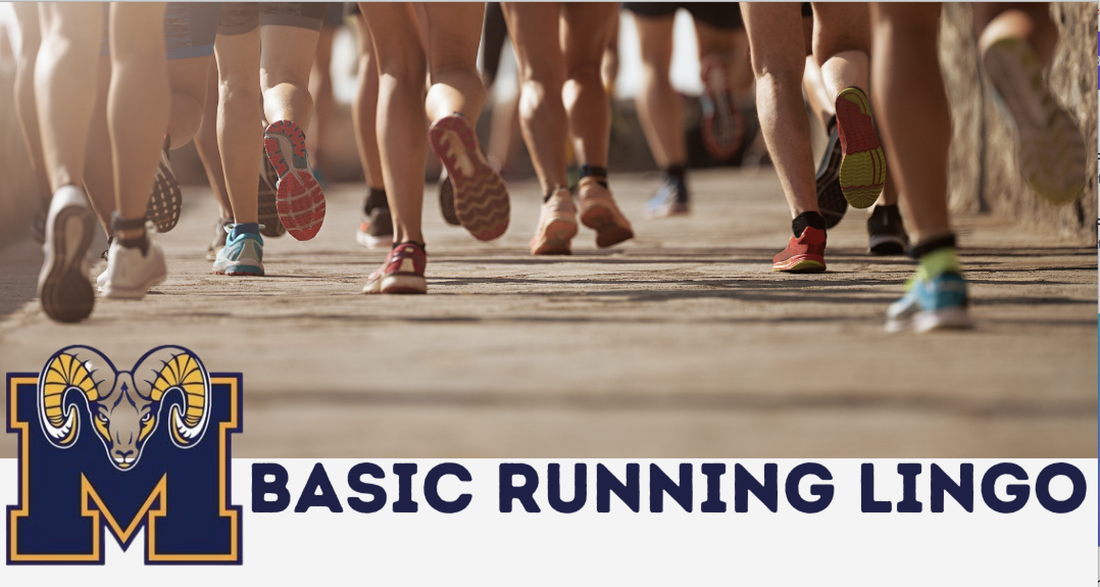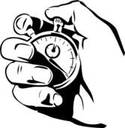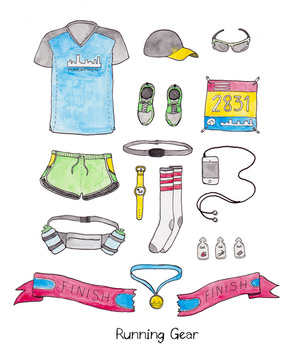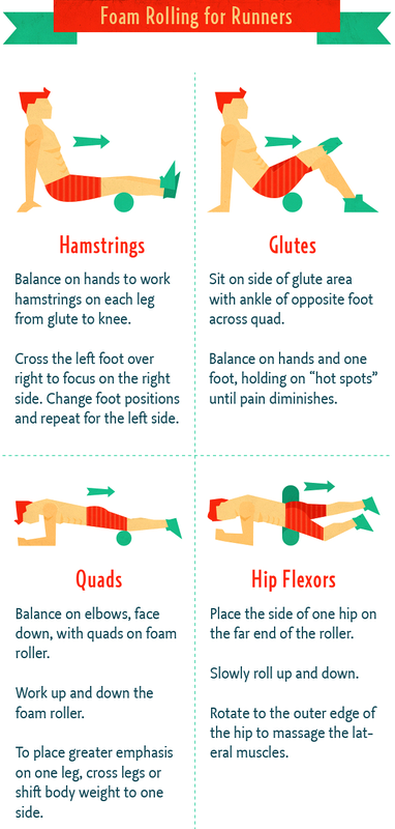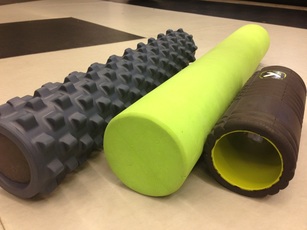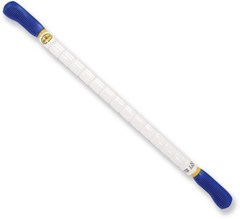|
Pace: usually refers to the amount of time it takes to clock one mile. Can also be used to express pace based on the type of run: “long run pace,” “marathon pace,” “5K pace,” etc. Warm-Up: Increasing heart rate and blood flow to the muscles and reduces the risk of injury, as well as releases heat from body, so the body is not as hot during event. Best sign of warm-up is light sweat. And is done best prior to a run/ race. Depending on workout/race, a warm-up could be for a certain distance or time. May also include dynamic stretching. Example: Today's race day warm up is run the (race) course, then drills, finish with 6x100m strides. Cool-Down: Just as a warm-up preps the body, a cool-down transitions it back to a resting state. Usually involves slowing down with a series of lighter activity and exercise post-workout. Putting sweats back on and regular training shoes, and cooling down the 2nd half of the course while cheering on the team that is still racing is what usually consist of cooling down. Static Stretching: holding major muscle groups in their most lengthened positions for at least 20-30 seconds. While many still believe static stretches prior to running help prevent injuries, research now suggests stretching it out is more beneficial after breaking a sweat. Dynamic Stretching: controlled movements that increase flexibility, power, and range of motion. The best dynamic stretches for runners include lunges, high knees, and butt-kicks. May also be referred to as "Drills" Funny Walks/Duck Walks: Mainly used before we run to strengthen shin muscles by walking on specific parts of feet. Example: On heels/toes pointed straight up/dorsiflexion. Walking on tippy toes/plantar flexion, Heels pointed in, Heels pointed out. etc. Or Toe taps. Tapping toes rapidly, as if you were waiting impatiently, for 30+ secs. Strides: These are simply the forward steps taken while running. Some runners also use strides to refer to a series of short sprints, usually between 50 and 200 meters. Cadence: The total number of 'revolutions per minute' (RPM), or number of full cycles taken within a minute, by the pair of feet, and is used as a measure of athletic performance. Trail Running: running on a trail, which offers a more natural setting, breaks up monotony, and can even work a whole different set of running muscles. Barefoot Running: Many modern runners are ditching their sneaks and discovering proper running form thanks to the barefoot movement. Made especially trendy by the book Born to Run, it emphasizes running like our cavemen ancestors may also help prevent injuries and improve performance. Routine: Anything an athletes does to make sure they are most comfortable during races or hard workouts. This could be the day, morning, or even the hour before a race. Each athlete is different and requires their specifics prior to racing or working out. So each athlete should have done their routine prior to the event. Some ice before race day (should be EVERYONE, but I digress), or some may take a while longer to warm up, or will put icy hot, pre wrap on their legs, stretch specific muscles groups more than others, etc. Example: 45 minutes before a race Jane puts icy-hot on her shins before she warms up, it's part of her routine. RICE: Rest, Ice, Compression, Elevation (of legs). When or if any pain starts to become a discomfort, RICE. This is part of an athletes homework. |
Workout Terms
|
Altitude training: training at altitude to increase the number of red blood cells, improving oxygen delivery to the muscles. Runners find they can train harder and perform better for several weeks after they return from about a month-long stay at altitude. Dehydration can occur at altitude because the air is thinner and dryer, so drink plenty of fluids. Get plenty of rest, and allow a few weeks back at lower altitudes before you race again.
Aquajogging: Running against the water’s resistance in the deep end of a pool, where you can’t touch the bottom, provides many of the benefits of running on land. A flotation belt will help keep you upright and give you stability. Easy Run: These light runs are best done at a conversational pace. Meaning if you can’t run and carry on a conversation, you’re going too fast! Splits: A run’s total time divided into smaller parts (usually miles). If a runner has an even split, it means they ran the same pace through the entire race/run. If it’s a negative split, they ran the second half faster than the first. And that’s a good thing! LSD: the acronym stands for long slow distance, or the week’s longest run. Recovery Run: a short, slow run that takes place within a day after a long, harder run. This teaches the body how to work through a fatigued state Speed work: Aimed at improving running speed, these types of workouts can include intervals, hill repeats, and tempo runs. Interval Training: alternating specific time periods of specific high and low intensity during a run Hill Repeats: Running up the hill (again and again) in this is a form of speed work. Heading up at a 5K pace and recovering down at an easy jog or walk, the number of hill repeats per workout depends on experience and fitness levels. But the benefits from the pain? Speed, strength, and confidence! Fartleks: an easier form of speed work for beginners. Meaning “speed play” in Swedish, fartleks are easy/moderate runs broken up by quick sprinting bursts. When changing speed though, the runner calls the shots (unlike more rigid intervals). So newbies can make it as fast and as hard as they can handle. An example, harder/fast for 4mins, easier/slower for 2mins, hard 3 mins, easy 90 secs, then 2 mins, & recovery back. Alternating Miles: Continuous long run where the first mile set to specific slower pace, and the following mile is ran at a faster pace. Example: Start at 8 min pace, 2nd mile at 7 min pace, keep alternating for 6 miles total. Tempo Run: tempo runs are a tougher form of speed training. Runners challenge themselves to hold a “threshold” (or comfortably hard) pace for a X-minute period during a run—along with a good warm-up and cool down, of course. Out-and-back: A course that entails running out to a turnaround spot, then running back to the starting point. Out-and-backs are a convenient way to get in runs in unfamiliar locales. They’re also a good option when you’re trying to run a little farther than you have before, because you don’t have the option of cutting the run short. Pick-Ups: Short, gentle increases in speed, or pick-ups, at the end of a run Plyometrics: Bounding exercises; any jumping exercise in which landing followed by a jump occurs. Strength Training: Runners need muscles too! Among its many other benefits, strength training, or exercises performed with or without weights (think push-ups, squats, and planks), helps runners become stronger and prevent injuries. Cross-Training: sports and exercises other than running that improve overall fitness and strength. Great examples of cross-training for runners include cycling, swimming, yoga, water running, and weight training Rest Day: Choosing the couch over the road at least one day a week allows a runner’s body to recover and repair muscles. Also, runner may stretch, foam roll, and RICE on rest days. |
Running Gear
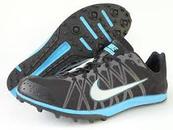 Make sure they are SPIKE-LESS
(BRAND does not matter) Make sure they are SPIKE-LESS
(BRAND does not matter)
Moisture-Wicking Clothing: Non-cotton running attire or technical apparel that keeps sweat away from the body to prevent chafing
Flats/Waffle Flats: Light weight running shoes used specifically for racing. They may look like slimmer version of a training shoe. Garmin/GPS watch: GPS-enabled sports watches to track distance, pace, heart rate, and more. We mainly use distance and pace. (Garmin is really popular brand, &the GARMIN FORERUNNER 10, is easy to use) Orthotics: Devices worn inside running shoes to help treat or prevent injuries. Orthotics can be hard or soft, and of varying length, depending on what injury they’re trying to address. You should wear orthotics only if advised to by a sports medicine professional who says you need one to address a specific underlying imbalance or weakness. Running Tights: Especially during cold weather months, runners squeeze into these spandex leggings or capris to keep warm. Compression Socks: Often a post-run tradition, runners wear a pair of compression socks, or very snug, knee-high tube socks, to speed recovery. Some even wear them during the race itself to get oxygen to the leg muscles at a faster rate. Singlets: Runners often wear these sleeveless tank tops while racing, these types are our uniforms. Affordable running clothes site & stores ***Running Wearhouse, Big 5, Sports Authority, (Ross, Old Navy, JCP have good sales especially for women's sports bras) |
Misc. Running Terms
Pronation: This refers to the way the foot strikes the ground while running. If someone is an overpronator, their foot rolls inward while running (guilty!). If someone has excessive wear on the outside of their sneakers, they’re likely an underpronator. Getting fitted for a proper running shoe can help with correcting both.
BPM: The heart rate or beats per minute (BPM) is the number of heartbeats during a minute.
Endurance: The body’s ability to withstand stress and pain during an aerobic activity such as running.
Aerobic vs. Anaerobic Exercise: While both aerobic and anaerobic exercises burn glucose, there are some differences. Aerobic exercise is long in duration but low in intensity (like walking or jogging), while anaerobic exercise is short in duration but high in intensity (like sprinting or heavy lifting).
Glycogen: the body stores glucose in the form of glycogen to be used for energy. When glycogen is gone, runners often “hit the wall” (more on that down below).
Lactic Acid: Formed when the body cannot generate energy using oxygen, lactic acid is produced anaerobically (especially during hard workouts).
Anaerobic Threshold: This is the point of exercise where the going gets tough, and lactic acid begins to accumulate in the bloodstream.
VO2 Max: Also known as aerobic capacity, VO2 Max is the body’s maximum oxygen intake.
EPOC: Excess post-exercise oxygen consumption, informally called afterburn, is a measurably increased rate of oxygen intake following strenuous activity.
Running Economy: Refers to how much oxygen you use when you run. When you improve your economy, you are able to run at a smaller percentage of max VO2 (your maximum rate of oxygen utilization).
Chafing: Yikes. Sweat and fabric rub against the skin while distance running and can cause painful irritation and rashes. To prevent chafing (or worse, bloody nipples), coat up everywhere (and we mean everywhere) with Bodyglide or Vaseline before hitting the road.
DOMS: delayed-onset muscle soreness, can occur between 24 and 48 hours after running and can make walking up and down the stairs especially troublesome.
Overtraining: If the previous injuries didn’t clue you in, there is such a thing as running too much! Let’s refer back to what a “rest day” means, shall we?
Hitting the Wall: Runners will feel as if they can’t go one more step once they ”hit the wall.” For many marathoners, the wall shows up around mile 20, and not surprisingly, they usually don’t see it coming.
Achilles tendon: The tendon that attaches your calf muscles to your heel bone. Achilles tendinitis can occur in new runners who increase their distance and/or intensity too quickly. Good flexibility in your calves and ankles can help to take some of the load off the Achilles tendon.
Ice Baths: An ice bath is shocking to the senses, but can also reduce inflammation and aid in the post-long run recovery process. Should be done post run, and or pre race day. Only Ice bath for up to 10 mins, ever. DO NOT go over time, or jump hot shower to warm up. (this goes for Icing too)
Common Running/Runners Injuries & prevention (UPDATED 3/16/18)
Runner’s Knee: One of the most common overuse injuries among runners, runner’s knee is also known as Patellofemoral Pain Syndrome (PFPS). The pain is usually isolated on or around the kneecap. TRIATHLETE <<< LINK
Plantar Fasciitis: Feel pain and stiffness in the heel? It might be plantar fasciitis or inflammation of the bottom of the foot due to overuse or overstretching. Sufferers can usually self-treat it with rest, ice, and stretching. PICTURE << LINK
Shin Splints: Another common running injury, shin splints refer to pain on or around the shinbones. Most cases can be treated with RICE, sometimes shin sleeves may help, but it could also mean it’s time to get some new running shoes. And the athlete may have been skipping out on their homework.
RUNNERS WORLD <<< LINK
ITBS: This painful injury to the iliotibial band (IT band) in the leg (which runs from the hip, down the thigh, across the knee, and through the shin) can leave many runners sidelined. Before totally cursing IT Band Syndrome, massage, stretching, and strength training tend to help. Hey, ITBS, meet the foam roller! Competitor <<<LINK
Plantar Fasciitis: Feel pain and stiffness in the heel? It might be plantar fasciitis or inflammation of the bottom of the foot due to overuse or overstretching. Sufferers can usually self-treat it with rest, ice, and stretching. PICTURE << LINK
Shin Splints: Another common running injury, shin splints refer to pain on or around the shinbones. Most cases can be treated with RICE, sometimes shin sleeves may help, but it could also mean it’s time to get some new running shoes. And the athlete may have been skipping out on their homework.
RUNNERS WORLD <<< LINK
ITBS: This painful injury to the iliotibial band (IT band) in the leg (which runs from the hip, down the thigh, across the knee, and through the shin) can leave many runners sidelined. Before totally cursing IT Band Syndrome, massage, stretching, and strength training tend to help. Hey, ITBS, meet the foam roller! Competitor <<<LINK
|
Foam Roller: Part of an athletes homework. This tube can replace a deep massage in preventing and relieving muscle knots and pain. Should be used post warm up and post runs/races.
A similar tool is "The Stick" and can be used similarly. Or some one can roll out athlete, but should be done cautiously and carefully. |
***We have both foam rollers and sticks at school, athletes can ask to borrow and return them.
They are great investments and could be purchased at almost any sporting goods store, runners high, or online. (I've link the online store, just click photo) |
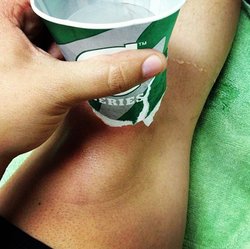
Ice Cup/Icing: Part of an athletes homework. Used for injury prevention, to decrease inflammation in area being iced, like knees, or shins. To be done after runs, or during RICE or when athlete is not running because of shin splints.
- Take a paper/styrofoam cup, and freeze water in it
- Once frozen, peel back/tear off cup and rub directly onto skin/area.
- Continue for at least 10 mins, but no more than 15
- Can be repeated throughout the day.
Early morning, afternoon, evening before bed. - Should not be done before run, only after or instead of.
- DO NOT try and warm up area by putting it in hot water.
- DO NOT go over time.
Racing Terms
400 Meters: One lap around the track.
Mile/1600m: 5280 feet or about 1609 meters (four laps around the track)
5K: 3.14 miles. (Most of our races are 3 miles)
Runner’s High: Most runners experience a state of euphoria and pure bliss known as “the runner’s high” either during or after a run.
Taper: A few weeks before a big race, a runner will decrease their total running mileage to store energy. Because the tapering process involves less running and more rest. We will do this going into league finals.
Chute: the area immediately past the finish line.
Carbo-Loading: During a taper, runners can eat all the pasta, bread, and bagels they want. Well, not really. There’s a right way and a wrong way to get your carb on!
Bib: Runners pick up this piece of paper with a designated number before the race and attach it to their shirts to wear during the run.
Kick: This is the final push runners’ give at the end of a race to increase their speed to the finish line.
Chip Time: Often measured by an electronic chip in the sneaker or bib, this is the actual time it takes a runner to get from the start line to the finish line. This is usually done at big invitational races.
Splits: A race’s total time divided into smaller parts (usually miles), is known as the splits. If a runner has an even split, it means they ran the same pace through the entire race. If it’s a negative split, they ran the second half faster than the first, always a good thing!
DNS/DNF: DNS (did not start) or DNF (did not finish) is what will appear in the race results if a runner does not start or finish a race.
PR/PB: These coveted letters stand for personal record and personal best. Good news: Run in just one race and it’s an automatic PR!
Mile/1600m: 5280 feet or about 1609 meters (four laps around the track)
5K: 3.14 miles. (Most of our races are 3 miles)
Runner’s High: Most runners experience a state of euphoria and pure bliss known as “the runner’s high” either during or after a run.
Taper: A few weeks before a big race, a runner will decrease their total running mileage to store energy. Because the tapering process involves less running and more rest. We will do this going into league finals.
Chute: the area immediately past the finish line.
Carbo-Loading: During a taper, runners can eat all the pasta, bread, and bagels they want. Well, not really. There’s a right way and a wrong way to get your carb on!
Bib: Runners pick up this piece of paper with a designated number before the race and attach it to their shirts to wear during the run.
Kick: This is the final push runners’ give at the end of a race to increase their speed to the finish line.
Chip Time: Often measured by an electronic chip in the sneaker or bib, this is the actual time it takes a runner to get from the start line to the finish line. This is usually done at big invitational races.
Splits: A race’s total time divided into smaller parts (usually miles), is known as the splits. If a runner has an even split, it means they ran the same pace through the entire race. If it’s a negative split, they ran the second half faster than the first, always a good thing!
DNS/DNF: DNS (did not start) or DNF (did not finish) is what will appear in the race results if a runner does not start or finish a race.
PR/PB: These coveted letters stand for personal record and personal best. Good news: Run in just one race and it’s an automatic PR!
I think that's enough, for now.
If you've read up to here, awesome! You must be a great student/parent who is eager to learn. Thank you.
I hope you found this beneficial and or helpful.
Let's have a great season. =)
If you've read up to here, awesome! You must be a great student/parent who is eager to learn. Thank you.
I hope you found this beneficial and or helpful.
Let's have a great season. =)
